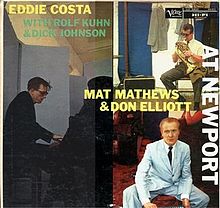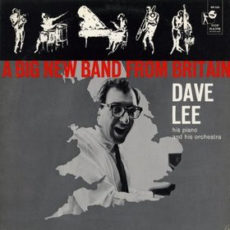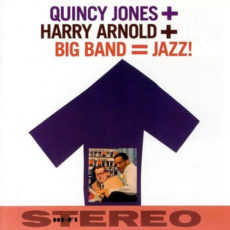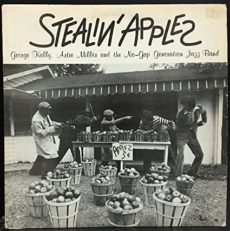
Daily Dose Of Jazz…
Jan Savitt was born Jacob Savetnick on September 4, 1907 in Shumsk, U.S.S.R. (now Ukraine) and reared in Philadelphia, Pennsylvania. He exhibited musical ability at an early age and began winning conservatory scholarships in the study of the violin. He was offered the position of concertmaster in Leopold Stokowski’s Philadelphia Symphony Orchestra, but turned it down, preferring to continue his studies at Curtis Institute. A year later, believing himself ready, he joined Stokowski and the association continued for seven years, during which time Savitt gained further laurels as a concert soloist and leader of a string quartet.
In 1938, Jan Savitt & His Top Hatters broadcast from 5–5:30 pm every Tuesday, thru Friday as the KYW staff orchestra at KYW/NBC in Philadelphia. Saturday’s weekly broadcast was one hour, coast-to-coast. The group also played at the Earl Theatre and performed with The Andrews Sisters and The Three Stooges.
He got his start in popular music sometime later as music director of KYW, Philadelphia, where he evolved the unique “shuffle rhythm” which remained his trademark. Numerous sustaining programs created such a demand for the “shuffle rhythm” that Savitt left KYW to form his own dance crew.
His band was notable for including George “Bon Bon” Tunnell,[3] one of the first Black singers to perform with a white band. Tunnell’s recording with Jan included Vol Vistu Gaily Star, co-composed by Slim Gaillard, and Rose of the Rio Grande. Helen Englert Blaum, known at the time as Helen Warren, also sang with him during the war years.
In the 1940s Savitt recorded short pieces used a filler before network shows for the National Broadcasting System’s Thesaurus series. Some of the pieces he created were I’m Afraid the Masquerade Is Over; If I Didn’t Care; Ring Dem Bells; and Romance Runs in the Family.
Violinist, bandleader and arranger Jan Savitt, known as “The Stokowski of Swing” from having played violin in Leopold Stokowski’s orchestra, passed away on October 4, 1948.
More Posts: arranger,bandleader,history,instrumental,jazz,music,violin

Daily Dose Of Jazz…
Edwin James Costa was born on August 14, 1930 in Atlas, Pennsylvania, near Mount Carmel, in Northumberland County. He was taught and influenced on piano by his older, musically trained brother, Bill, and a local piano teacher. He took paid jobs as a pianist from the age of 15, and in contrast to his piano training, he was self-taught on vibes.
In 1949 he played and toured for a few months with violinist Joe Venuti. He then worked for his brother in New York until 1951, when Eddie was drafted into the army. During this time in the armed forces, he performed in Japan and Korea. After his discharge, he returned home and worked around the New York area, including for bands led by Kai Winding, Johnny Smith, and Don Elliott.
n 1957 he was chosen as Down Beat jazz critics’ new star on piano and vibes – the first time that one artist won two categories in the same year. He became known for his percussive, driving piano style that concentrated on the lower octaves of the keyboard.
Costa had an eight-year recording career, during which he appeared on more than 100 albums, with five of them were under his own leadership. As a sideman, he appeared in orchestras led by Manny Albam, Gil Evans, Woody Herman, and others; played in smaller groups led by musicians including Tal Farlow, Coleman Hawkins, Gunther Schuller, and Phil Woods; and accompanied vocalists including Tony Bennett and Chris Connor. Costa died, aged 31, in a car accident in New York City.
His first recording as a leader was in 1956, with his trio featuring bassist Vinnie Burke and drummer Nick Stabulas. Around this time, he was nicknamed The Bear by Burke for his powerful playing. He and Burke joined Tal Farlow and became the resident trio at the Composer Club. In 1957 Costa was again leader, recording Eddie Costa Quintet with Woods, Art Farmer, Teddy Kotick, and Paul Motian. He would go on to record 1958’s Guys and Dolls Like Vibes with Bill Evans, Wendell Marshall, and Motian.
Late at night on July 28, 1962, pianist, vibraphonist, composer, and arranger Eddie Costa passed away in a car crash, involving no other vehicles, on New York’s Westside Highway at 72nd Street in New York City.
More Posts: arranger,composer,history,instrumental,jazz,music,piano,vibraphone

Daily Dose Of Jazz…
Dave Lee was born on August 12, 1926 in Newington, London, England and took lessons as a child. When his photographer father was transferred during the war to the North East to work on camouflaging military equipment, it was here that he started to perform in local groups. His big break came in 1942 when he won the Melody Maker poll for Best New Jazz Pianist.
A move to South Africa in 1947 had him working as a resident musician for night clubs in Port Elizabeth and Johannesburg. He went on to study at the Johannesburg Conservatory of Music gaining a Mus.Bac. By 1954 Lee invited Johnny Dankworth to perform in South Africa, and it was Dankworth who persuaded him to return to England as a pianist/arranger for the Johnny Dankworth band. From 1955 to 1959 he played on all of the recordings made by the Johnny Dankworth Orchestra.
David performed with Terry and McGhee, the Buddy Tate Quartet and Jack Parnell. He also arranged for Norman Wisdom, Benny Hill, Cleo Laine and Judy Garland. From 1959 he led a trio who recorded a number of successful albums, including A Big New Band from Britain, which was in The Cashbox Top Ten for six weeks. The trio also produced music for the 1960s TV series The Avengers, for which John Dankworth had written the original theme music, and the Trio features prominently in the 1962 episodes The Removal Men. They would go on to appear in several other episodes.
With his composing career beginning in the 1950s, he was writing jingles for television ads, then teamed up with lyricist Herbert Kretzmer and wrote hit songs Bangers and Mash, Goodness Gracious Me, and Kinky Boots and music for the West End stage musical Our Man Crichton in 1964.
His film music career began in 1960 with low-budget features, but gradually he progressed to fine orchestral scores for important movies. In 1983, Lee was elected BBC Jazz Society Musician of the Year, and in 1990 was one of the founders of jazz-only radio station 102.2 Jazz FM. Still busy in his 90s, pianist, arranger, orchestra leader, songwriter and film composer David Lee’s novel Nothing Rhymes with Silver about a fictional jazz pianist was published in 2007.
More Posts: arranger,bandleader,history,instrumental,jazz,music,piano

Daily Dose Of Jazz…
Harry Arnold Persson was born on August 7, 1920, in Helsingborg, Sweden and led his first big band in 1942, playing the saxophone initially but eventually ceased to perform, concentrating on arranging.
From 1949-52 he played and arranged for Thore Ehrling’s band and worked extensively as a studio musician, particularly writing film scores through much of the 1950s. From 1956 to 1965 Arnold led the Swedish Radio Big Band, which included Arne Domnérus, Bengt Hallberg, and Åke Persson.
American trumpeter Benny Bailey played with the band for a time, Quincy Jones arranged and briefly led the group, and they recorded with Ernestine Anderson, Lucky Thompson, Coleman Hawkins, Toots Thielemans, Tony Scott, and Stan Getz.
Disbanding the group in 1965, Arnold continued working as an arranger and led big bands in Europe. Saxophonist and bandleader Harry Arnold passed away on February 11, 1971 at the age of 51 in Stockholm, Sweden.
More Posts: arranger,bandleader,history,instrumental,jazz,music,saxophone

Daily Dose Of Jazz…
George Kelly was born on July 31, 1915 in Miami, Florida. In the 1930s Panama Francis was a sideman in Kelly’s band. During the Forties, he played in Al Cooper’s band.
Kelly played in Francis’s Savoy Sultans band in the 1970s, and had played of the same name in the 1940s. Leading his own bands he was also a sideman who worked with Tiny Grimes, Rex Stewart, and Cozy Cole.
Tenor saxophonist, vocalist, bandleader, and arranger George Kelly, who recorded seven albums as a leader, passed away at the age of 82 on May 24, 1998.
More Posts: arranger,bandleader,history,instrumental,jazz,music,saxophone,vocal




